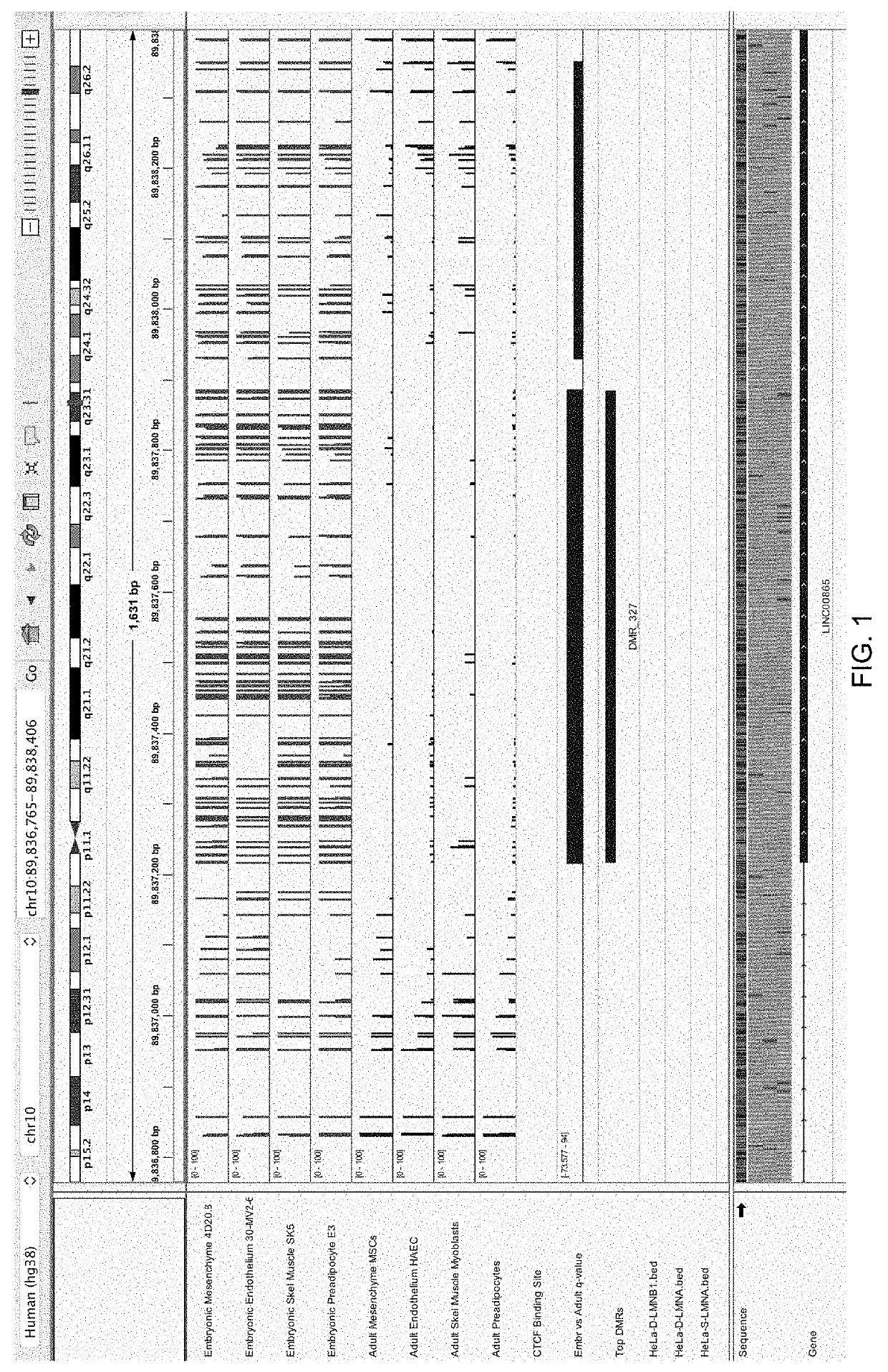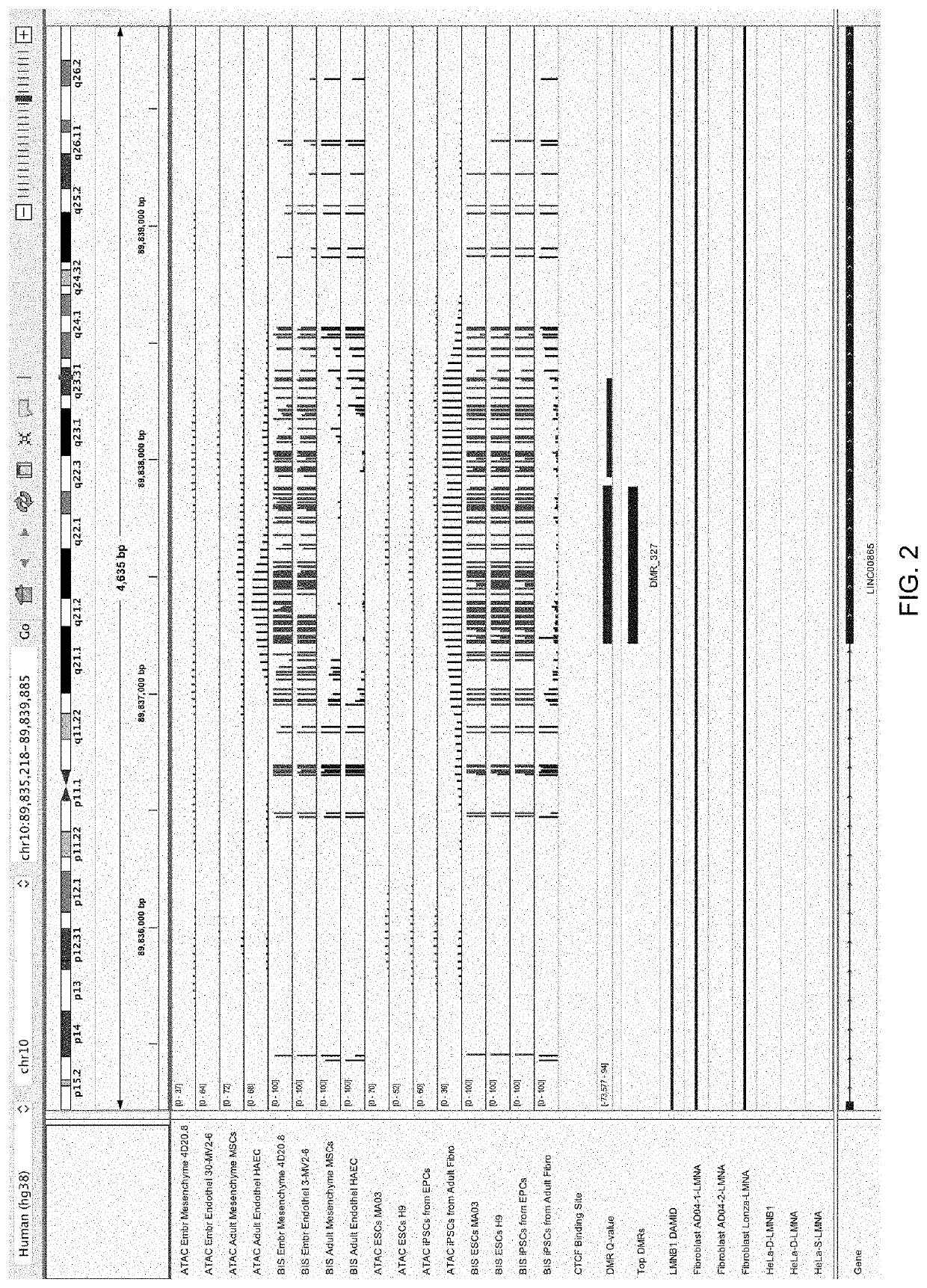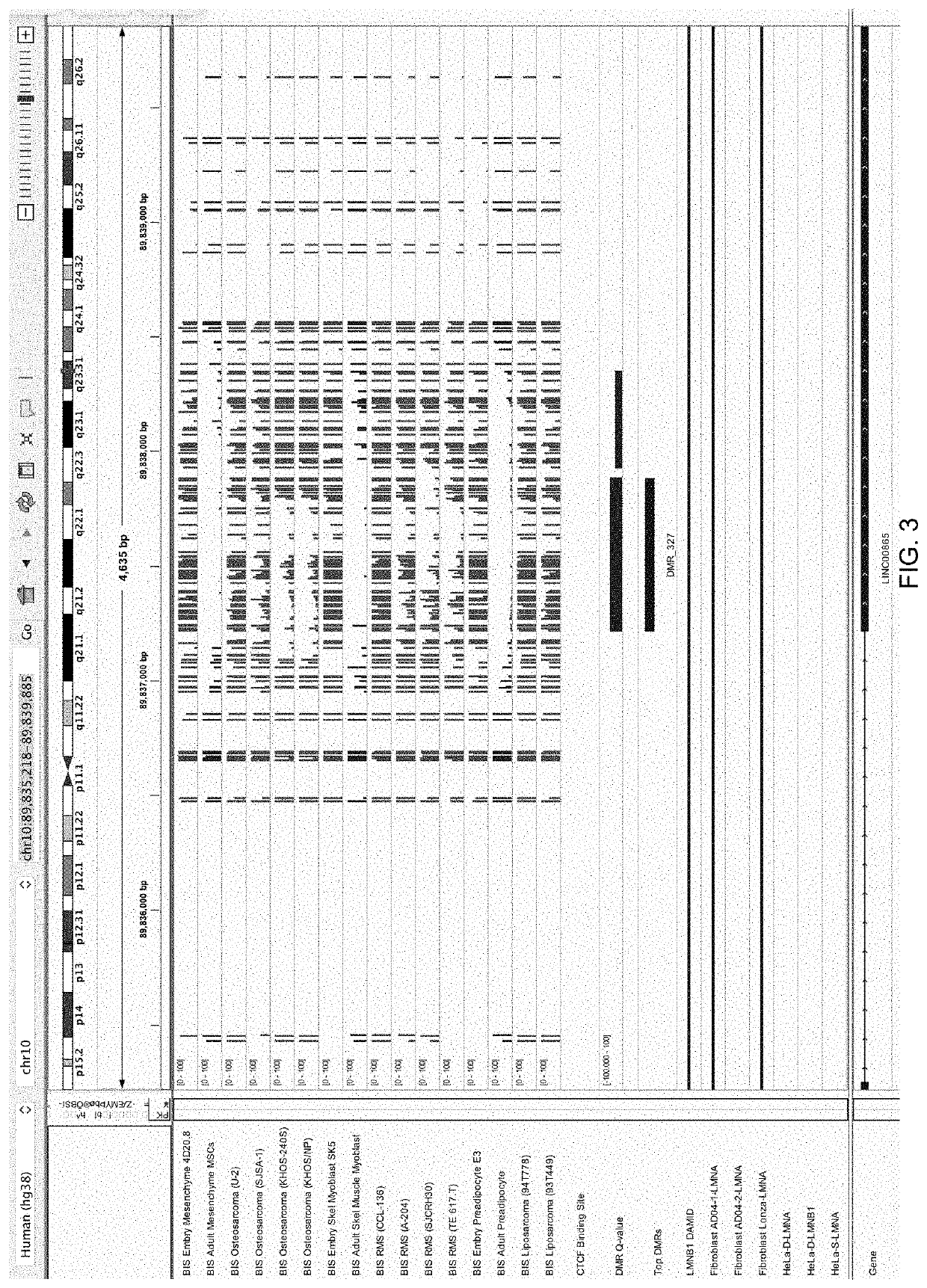Differentially-methylated regions of the genome useful as markers of embryo-adult transitions
a technology of differentially-methylated regions and genomes, applied in the field of diagnostics, prognosis, monitoring and modulation of the embryonic, fetal, adult epigenetic states of the human genome, can solve the problem of counterintuitive late technology of reverting cscs to a more primitive embryonic sta
- Summary
- Abstract
- Description
- Claims
- Application Information
AI Technical Summary
Benefits of technology
Problems solved by technology
Method used
Image
Examples
example 1
f Markers of the Embryo-Onco Phenotype to Characterize Malignant Cells
[0153]As disclosed in the present invention, there are many cell type-specific DNA methylation marks as a result of the different patterns of gene expression in diverse differentiated cells. Therefore, the validation of true DMRs useful in detecting or diagnosing the embryonic vs fetal or embryonic vs adult phenotypes of cells requires a comparison of embryonic, but nevertheless differentiated cells with post-EFT cells, such as adult differentiated cells of the same differentiated type. And to determine whether those DMRs are pre or post-EFT in nature, it is necessary to also observe DMRs from malignant cells from the corresponding differentiated cell type. In this example, we compare of embryonic, adult, and malignant osteochondral mesenchyme; or embryonic, adult, and malignant skeletal myoblasts, or embryonic, adult, and malignant preadipocytes and embryonic, adult, and malignant skeletal muscle myoblasts.
[0154]...
example 2
tion of Cancer Maturation (iCM) in Dematured (DC) Cells
[0161]In this example we induce cancer maturation in a cancer cell line displaying DMR markers of the present invention of a pre-fetal state such as hypermethylation of DMR_038 co-localizing with the gene COX7A1 which is not expressed in most pre-fetal differentiated cell types, is progressively increased in expression during fetal and adult development, and repressed in cancer cells displaying a pre-fetal (DC) phenotype. As an example of induced cancer maturation, we expressed the COX7A1 gene at adult levels in the DC fibrosarcoma cell line HT1080. We then analyzed the take rate and growth kinetics of the HT1080 cells with (HT1080+COX7A1) and without (HT1080−COX7A1) COX7A1 introduced by means of lentiviral infection. Growth kinetics of the line with and without iCM was then measured in female athymic nude mice. Ten mice were injected with 5×106 cells subcutaneously once per day of either the native HT1080 cells or the HT1080 ce...
example 3
Sensitivity of Cells with a Post-EFT Pattern of Gene Expression to Senolysis when Treated with iTR Agents
[0162]The present invention describes the use of DMR markers of the EFT to determine the sensitivity of cells to undergo apoptosis in the presence of chemotherapeutic or radiotherapy agents that damage DNA or otherwise induce apoptosis. Since the selective removal of cells with DNA damage includes cells commonly designated as “senescent” cells, such as those with significant loss of telomeric DNA, we choose to designate the purposeful induction of apoptosis in damaged cells as “senolysis” as an inclusive term for the induction of apoptosis in cancer cells by the chemotherapeutic and radiotherapies described herein, as well as cells that have significant DNA damage from intrinsic sources such as with telomeric attrition.
[0163]The pre-EFT (DC) fibrosarcoma cell line HT1080 was infected with lentivirus expressing COX7A1 together with a control line expressing green fluorescent prote...
PUM
 Login to View More
Login to View More Abstract
Description
Claims
Application Information
 Login to View More
Login to View More - R&D
- Intellectual Property
- Life Sciences
- Materials
- Tech Scout
- Unparalleled Data Quality
- Higher Quality Content
- 60% Fewer Hallucinations
Browse by: Latest US Patents, China's latest patents, Technical Efficacy Thesaurus, Application Domain, Technology Topic, Popular Technical Reports.
© 2025 PatSnap. All rights reserved.Legal|Privacy policy|Modern Slavery Act Transparency Statement|Sitemap|About US| Contact US: help@patsnap.com



